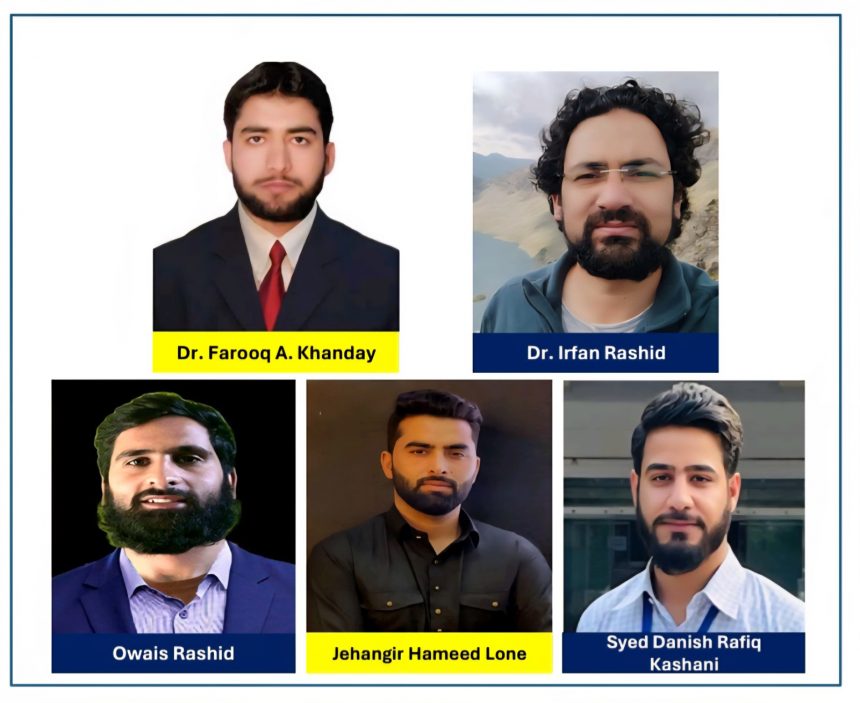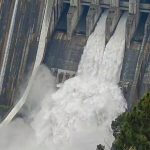Srinagar, July 23: In a significant advancement for the local houseboat industry, faculty members and students from the University of Kashmir (KU) have been granted Intellectual Property (IP) rights for an innovative self-navigating boat designed for firefighting and aquatic ecosystem monitoring.
The patent for the design, titled “Self-Navigating Boat for Fire Mitigation and Aquatic Ecosystem Monitoring,” was officially awarded on July 8, 2025, marking a milestone that strengthens KU’s reputation on the global innovation stage.
The innovation is the result of collaborative efforts by Dr.Farooq Ahmad Khanday from the Department of Electronics and Instrumentation Technology, Dr.Irfan Rashid from the Department of Geoinformatics, and students Owais Rashid, JehangirHameed Lone, and Syed Danish RafiqKashani.
This innovation addresses two pressing challenges in the region: the frequent fires on floating structures like houseboats, and the deteriorating health of urban lakes caused by pollution and insufficient monitoring.
Dr.Khanday told Rising Kashmir that fires on floating structures and waterfront properties pose serious risks, particularly where emergency response times are hampered by difficult access.
“Simultaneously, aquatic ecosystems suffer from pollution, poor water quality monitoring, and environmental changes. Current fire response and environmental monitoring methods are either costly or impractical, complicating routine management,” he explained.
To tackle these issues, the team developed a self-operating boat capable of responding to fire incidents and conducting water quality assessments autonomously, reducing the need for direct human intervention.
“The boat assists in fire emergencies, conducts routine environmental monitoring, supports ecological conservation, and ensures safer navigation by measuring water depth and identifying hazards. This is especially crucial for protecting the iconic houseboats on Dal Lake, which are vulnerable to both fire and environmental degradation,” Dr.Khanday said.
He highlighted that the innovation has broad applications in disaster response, environmental protection, research, and public safety. It can be utilised by municipal authorities, disaster management agencies, environmental departments, and research institutions for improved oversight of inland water bodies and quicker hazard response.
According to the researchers, the compact design allows for routine deployment across large inland water bodies where traditional firefightingand monitoring tools are either inaccessible or too costly.
Another member of the team, Dr.Irfan Rashid, said that incidents of large-scale fires on houseboats in Srinagar’s Dal Lake have led to significant loss of life and property. These houseboats are located in areas that are often inaccessible to conventional firefighting equipment, resulting in delayed emergency response.
“At the same time, there is a pressing need for regular water quality assessment and depth measurement to support ecological conservation and ensure navigational safety. However, existing commercial solutions for such tasks are prohibitively expensive and not feasible for routine deployment across large inland water bodies” he said.
Dr.Irfan said that to address these multifaceted challenges, we have developed a compact and cost-effective Aqua Boat capable of performing multiple functions. This self-navigating system is designed for fire suppression, water quality monitoring, depth measurement, obstacle detection, and autonomous route planning.
“It is powered by solar energy and controlled through onboard systems; the boat offers a sustainable and intelligent platform for enhancing both safety and environmental oversight without requiring continuous human involvement,” he added.
Meanwhile, statistics show that over the past two decades, the number of houseboats across Dal Lake, Nigeen Lake, ChinarBagh, and the Jhelum River has declined sharply—from approximately 2,000 in 1990 to just around 750 by 2024. This decline is attributed to fire damage, poor maintenance, and legal restrictions on renovations due to environmental regulations.








